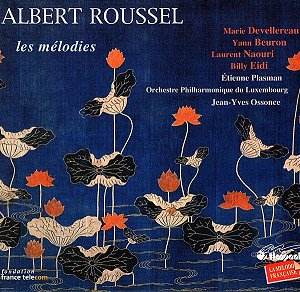 Composer: Wolfgang Amadeus Mozart
Composer: Wolfgang Amadeus Mozart
Works: Divertimento in E flat, K. 563; Duo in B flat, K. 424
Performers: Leopold String Trio (Marrianne Thorsen, violin; Scott Dickinson, viola; Kate Gould, violoncello)
Recording: Champs Hill, GB, 23-25.11.2000
Label: Hyperion CDA67246
The Divertimento in E flat, K. 563, and the Duo in B flat, K. 424, offer a fascinating glimpse into the more intimate side of Mozart’s oeuvre, written during a period when the composer was increasingly engaged with the chamber music genre. The Divertimento, composed in 1788, is a rich tapestry of musical ideas, showcasing Mozart’s unparalleled ability to blend sophistication with accessibility. It was conceived for the entertainment of a select audience, reflecting the social milieu of the time where such works served not only as art but also as social currency among the aristocracy.
The Leopold String Trio’s interpretation of the Divertimento is remarkable in its clarity and conviction. Their approach reveals the nuanced interplay between the instruments, particularly in the first movement, where the dialogue between Thorsen’s violin and Dickinson’s viola is strikingly conversational. The balance achieved during the sweetly lilting second minuet allows the listener to appreciate the individual colors of each instrument while maintaining an overall cohesion. However, one might argue that their execution occasionally leans toward reticence, particularly in moments that could benefit from a more vigorous, spirited engagement. This is particularly evident in the finale, where the folk-like theme yearns for a more exuberant delivery, one that would invite the audience to share in the joy of the music rather than merely observe it.
The Duo in B flat, K. 424 stands out for its harmonic richness and intricate interplay between the violin and cello. Here, the Leopold String Trio excels, showcasing a commendable sensitivity to the work’s lyrical lines. The adagio, in particular, is a masterclass in expressiveness, with the performers drawing out the poignant beauty of Mozart’s melodic contour. The phrasing is handled with care, and the subtle shifts in dynamics are executed with precision, creating a sense of intimacy that is both engaging and deeply moving. There remains an interesting historical note regarding this work, as it was penned to assist Haydn’s brother Michael during a period of ill health. This context adds a layer of poignancy, suggesting that Mozart’s genius was not only in his technical mastery but also in his generosity of spirit.
The recording quality from Champs Hill is exemplary, capturing the warmth of the ensemble’s sound while providing a clear separation of timbres. The engineering allows for the delicate nuances of the instruments to shine through, particularly in quieter passages where the intimate nature of the music is paramount. Duncan Druce’s notes add depth to the listening experience, providing context in English, French, and German, which enhances the listener’s understanding of the works.
Comparisons with other notable recordings, such as those by the Hagen Quartet or the Emerson String Quartet, reveal the Leopold String Trio’s distinctive interpretative choices. While the former may emphasize a more dramatic flair, the latter’s rendition is marked by a polished refinement. The Leopold String Trio occupies a middle ground that, while perhaps lacking some of the emotional peaks found in these other interpretations, offers a refreshing, unpretentious approach that is both enjoyable and thought-provoking.
The Leopold String Trio’s recording of Mozart’s Divertimento in E flat and Duo in B flat is an engaging exploration of these lesser-known works. Their musical camaraderie and technical prowess shine through, particularly in moments of lyricism and intricate interplay. While there may be opportunities for a more extroverted interpretation, the overall execution is polished and respectful of Mozart’s genius, allowing the music to resonate with its inherent charm and sophistication. This recording stands as a valuable addition to the chamber music repertoire and is sure to be appreciated by both seasoned Mozart aficionados and newcomers alike.



